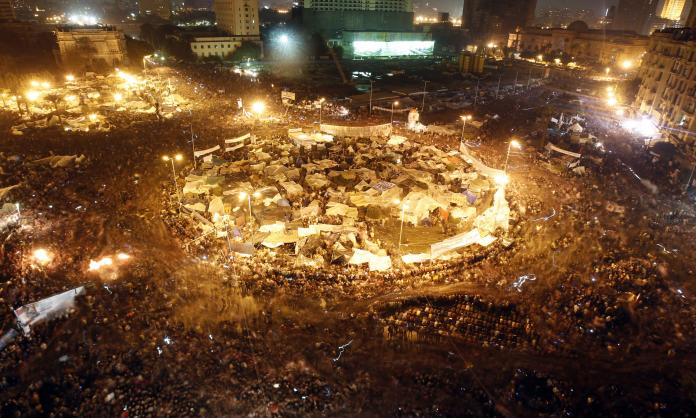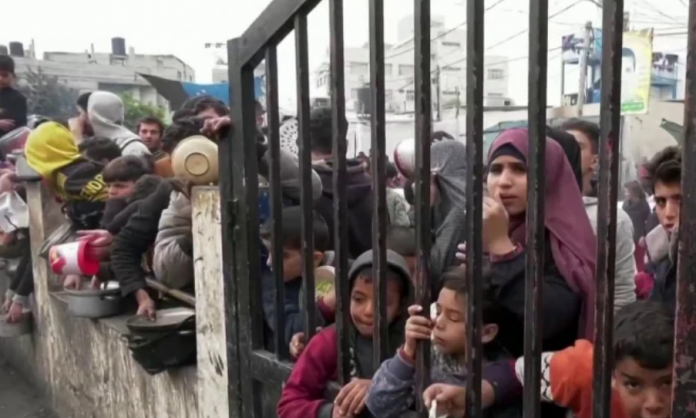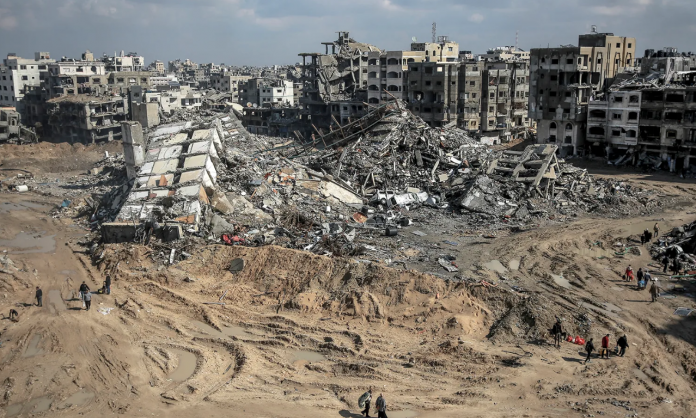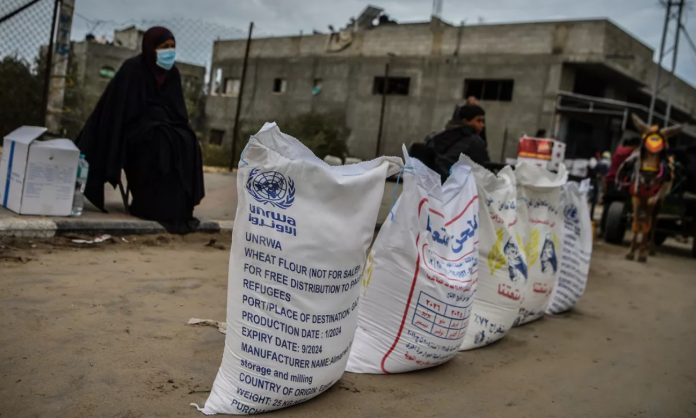On the morning of 17 December 2010, Mohamed Bouazizi, a young Tunisian street vendor, stood outside the governor’s office in Sidi Bouzid and set himself on fire. He had been driven to despair by police harassment and corruption that had turned his life into a living hell. One of his sisters later told Reuters: “What kind of repression do you imagine it takes for a young man to do this? A man who has to feed his family by buying goods on credit when they fine him ... and take his goods. In Sidi Bouzid, those with no connections and no money for bribes are humiliated and insulted and not allowed to live”.
Mohamed did not live. He died of his injuries in hospital several weeks later. But by then the tragedy of his story – and the fact that so many people saw their own desperate plight in his – had sparked a revolutionary uprising that was to spread from Tunisia to Egypt and across the Middle East and North Africa, drawing tens of millions of people into the most epic struggle for justice and freedom in the history of the Arab world.
On 14 January 2011, the man who had ruled Tunisia with an iron fist for 30 years, Zine El Abidine Ben Ali, was forced to flee to Saudi Arabia in the face of an insurgent nationwide movement. The stunning victory of the Tunisian uprising electrified the Arab world. In retrospect it can seem like the spread of the revolt was automatic. It did not seem so at the time. Egyptian-US socialist Ahmed Shawki, who was in Cairo after Ben Ali fell, recounted overhearing a US tourist saying she thought it wouldn’t happen there, that the country was much more stable than Tunisia, and being inclined to agree with her. When left wing and democracy activists called for a “day of anger” on 25 January, no one knew what would happen.
The courage of those activists, who were risking everything on the hope that their call would be answered, paid off. I wrote at the time, “In amazing scenes not witnessed in Egypt since the bread riots of 1977, thousands of people marched through the streets of Cairo on Tuesday, battling riot police, storming government buildings, and occupying the symbolic Tahrir Square. The protests started in the early afternoon, but many hours later – at 2am the next morning – thousands of people were still demonstrating outside the parliament building”.
One account from Tahrir Square, early in the day, reported:
“On the south end of the square, a military tank rolled into the crowd. At the top of the tank an officer manned a fire hose that hammered down onto the protesters. But no one moved.
“The fire tank had not advanced more than 30 yards before a young Egyptian sprinted up the front of the vehicle and scaled up the side. He proceeded to climb up to the top of the tank, inciting ovations from the crowd. When he reached the top of the tank, the officer manning the hose dropped the nozzle and jumped on the back of the protester. The two men toppled off the vehicle and onto the ground, where the man was taken away by other officers.
“The moment they fell to the ground, the front 200 protesters dropped to their knees in unison and began to pray while the rest of the crowd looked into the faces of Egyptians staring at the scene from high above in their apartment windows. ‘Who will be the next hero?’ they chanted as they looked up. Then they burst into a new chant: ‘Come join us, come join us!’”
By the end of the day the police had been driven off the streets by many thousands of people. As tear gas wafted through the air, and the exuberant chants of young protesters echoed through the streets, an Al Jazeera reporter asked a group of young men what was going on. Their reply: “This is the first day of our revolution”.
For the next 18 days, an extraordinary struggle unfolded across Egypt. At the centre of it, and broadcast live around the world, was the occupation of the iconic Tahrir Square in Cairo. The government threw everything it had at the protest movement, shutting down the internet, emptying the prisons to create disorder and panic, orchestrating looting throughout the capital at the same time security services thugs arrested, tortured and killed hundreds of people. But it was not enough; the dam had broken.
Every act of sabotage and violence was met with all the collective creative brilliance that only a mobilised and awakened population can bring forth. Neighbourhood committees were established to organise checkpoints across the city to thwart sabotage. Attempts to divide people on religious lines failed as Christians and Muslims organised to defend each other’s communities. Women and young kids – usually denied any political agency – addressed crowds of thousands from makeshift stages, demanding courage and resilience in the face of the violence of the regime. And eventually, just when it seemed that Mubarak might outlast the revolutionaries, a mass strike movement erupted across the country, finally convincing the military it needed to force Mubarak to step down if it was to have any chance of containing the situation.
As the revolution unfolded in Egypt, similar movements were exploding across the Arab world. The most dramatic movements were in Bahrain, Syria, Yemen and Libya, but mass protests took place in almost every Arab country. Even in Saudi Arabia, the heart of Arab reaction, protesters took to the streets.
The revolution in Tunisia may have been begun by the actions, part tragic, part heroic, of a single man. And the uprising in Egypt might not have happened if not for the audacity of the tiny numbers of people who risked their lives to call people into the streets. In every country, the decisions of individuals and groups of people to put themselves on the line were the indispensable prerequisite for what followed.
But there are many times in history when such attempts at providing a spark do not set off the fire of mass revolt. The revolutions in Egypt and Tunisia and beyond were possible only because of the deep social crises in these countries, the unbearable injustice and inequality of decades of neoliberal capitalism. For decades, the politics of the Arab world had been dominated by the interconnected questions of Zionism and imperialism. These forces were indeed responsible for a great deal of the suffering of the Arab people. But focus on these twin evils also obscured the key schism in Arab society – the divide between the mass of the population who endured poverty and repression and the tiny, ultra-rich elite who profited from the immiseration of the vast majority.
Now, in the simple but brilliant slogan “The people demand the overthrow of the regime”, the true divide of Arab society was laid bare. It didn’t matter if the ruling elite were – as in the case of Egypt – open allies of the US and Israel, or – as in the case of Syria – they posed as an anti-imperialist power. From the bottom of society, they looked exactly the same. The impoverished young workers of Syrian cities looked at the revolution in Egypt and Tunisia and saw a reflection of their own society – at the top a corrupt, bloated elite, and at the bottom a majority that was oppressed and downtrodden, but that also had the power, if it was prepared to stand up and use it, to turn the social order on its head.
The first weeks of what Western commentators called the Arab spring, but which is more rightly described as the Arab revolution, were extraordinary days of hope. I was in Egypt a few weeks after Mubarak was overthrown. Everywhere you looked you saw the imagery of the revolution. The ramshackle street stalls that had previously sold pyramid souvenirs to tourists now solely stocked “January 25 revolution” T-shirts. It seemed like every other car in the city – even the taxis whose drivers had for a time played a deeply reactionary role in the uprising – was adorned with a sticker celebrating the overthrow of Mubarak.
On one of the first days I was in Cairo, 50,000 people rallied in Tahrir Square in solidarity with the Palestinians, whose Nakba protests in Gaza and the West Bank were being murderously put down by the Israeli military. This in a country where only a couple of months earlier a demonstration of even a few dozen in support of Palestine would have been driven off the streets by police.
But behind the scenes, the counter-revolution was growing. The military, which claimed to support the revolution and to have delivered the people’s demand to remove Mubarak, was in fact the revolution’s greatest enemy. Over the coming months and years, that would become ever clearer, and in response thousands of young Egyptians would engage in a deeper and more profound struggle that was not decisively put down until after General Abdel Fattah el-Sisi seized power in a military coup in July 2013.
The day after the mass rally for Palestine in Tahrir Square, I went to a protest of thousands at the Israeli embassy in Giza – a boat-ride across the Nile from central Cairo – which turned into a night-long battle in which several protesters were killed and more than 160 injured as security forces opened fire with rubber bullets and live ammunition. That night of violence was one of the first concrete indications that the old order was defeated, but also determined to strike back.
In country after country in the following months and years, the old order did just that. The most dramatic example was Syria, where President Bashar al-Assad determined from day one that revolt would be met with intransigent violence. In Bahrain the revolution was bloodily put down by Saudi troops. Across the region, vicious state violence combined with an intense propaganda campaign depicting revolutionaries as US stooges, Islamist terrorists or, in many cases, both.
The first phase of the Arab revolution showed the weakness of the old order, and demolished the once dominant idea that a generalised Arab revolt was impossible. It placed the courage and the beauty and the heroism of the mass of Arab people at the centre of world politics – the righteousness of their cause was so obvious that, for a time at least, the politicians and media pundits who had spent decades dismissing them and fawning over their corrupt and despicable rulers had to bow their heads in shame.
Those days of hope showed what was possible. But the dark days that followed –the Arab counter-revolution – demonstrated with devastating clarity the lengths the old order will go to in order to stay in power. How to prevent them from succeeding in that goal, and to win the society the great 2011 Arab revolution fought for, is, as the Arab revolution rises again in Iraq, Lebanon, Algeria, Sudan and beyond, an urgent question. It will be the subject of part two of this article.











